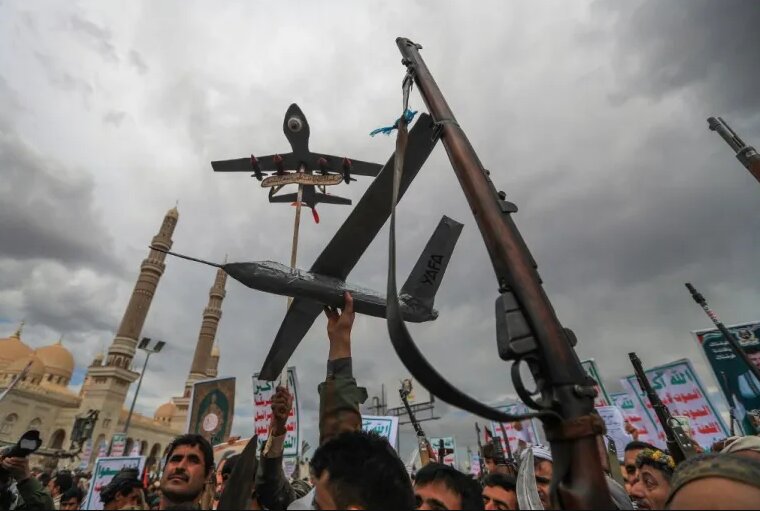Tel Aviv struggles to counter Ansarallah strikes amid growing military failures

TEHRAN - Israel’s escalating conflict with Yemen’s Ansarullah movement has intensified, with recent reports highlighting Tel Aviv’s growing desperation to counter persistent missile attacks targeting occupied Palestinian territories.
As Ansarullah’s military operations continue to challenge Israel’s defense capabilities, the regime is reportedly exploring non-military solutions, including potential ceasefire agreements, to halt the barrage of ballistic missiles and drones launched from Yemen.
This shift reflects the limitations of Israel’s military responses and the strategic complexities posed by Ansarullah’s solidarity with the Palestinian cause.
Military campaign and tactical challenges
On the night of July 6-7, Israel launched a major military campaign targeting key Ansarallah-controlled infrastructure in Yemen, including the ports of Ras Isa, Hudaydah, As-Salif, and a power station in Ras Kanatib. According to the Israeli occupation force, around 20 aircraft deployed 50 bombs and missiles in the strikes, aiming to degrade Ansarallah’s ability to threaten Israeli maritime routes and territory.
One notable target was the Galaxy Leader, a vessel seized by Ansarallah two years prior and converted into a radar platform to monitor shipping toward Israel’s port of Eilat.
However, despite the scale of these operations, Ansarallah’s air defenses, including advanced domestically produced surface-to-air missiles, reportedly forced several Israeli squadrons to abort their missions (Caliber.az, 2025). This resilience reflects a significant tactical evolution that complicates Israel’s efforts to achieve decisive military results.
Persistent missile threat and Israeli vulnerabilities
While Israel has intercepted many incoming missiles and drones, Ansarallah’s attacks continue unabated, striking sensitive Israeli infrastructure such as Ben Gurion Airport and triggering widespread air raid sirens. These attacks have caused operational disruptions and heightened public anxiety across Israel.
Israeli military analysts acknowledge that the sheer volume and precision of these strikes expose the limitations of Israel’s missile defense systems and raise doubts about the long-term effectiveness of air campaigns against Yemen’s rugged terrain and dispersed targets.
Moreover, Israeli intelligence reports suggest that Ansarallah is manufacturing missiles at a rapid pace, maintaining a stockpile capable of sustaining ongoing attacks. This continuous replenishment undermines Israel’s attempts to degrade Ansarallah’s capabilities through airstrikes, creating a protracted conflict dynamic.
Strategic and diplomatic implications
Faced with the inability to decisively neutralize the threat militarily, Israeli officials are reportedly exploring diplomatic options. One scenario under consideration links a ceasefire in Gaza with a halt to missile attacks from Yemen, reflecting a recognition that regional conflicts are interconnected and that military action alone cannot resolve the multidimensional crisis. Concurrently, Israel is lobbying the United States to intensify pressure on Ansarallah and form a regional coalition to contain the threat, though achieving consensus remains challenging.
This strategic dilemma is compounded by the fact that Israeli military and intelligence officials express skepticism about the long-term impact of airstrikes given Yemen’s geography and Ansarallah’s adaptive tactics. The conflict thus risks becoming a prolonged war of attrition with no clear exit.
Humanitarian and economic fallout
Israeli strikes on Yemeni ports and infrastructure have worsened Yemen’s humanitarian crisis, damaging civilian facilities and disrupting essential services. Yet, Ansarallah’s attacks on Israeli-linked ships in the Red Sea are unnerving Israeli officials and putting economic pressure on Israel’s economy.
A persistent and complex challenge
Israel’s confrontation with Yemen’s Ansarallah has exposed significant vulnerabilities in its defense posture and highlighted the limits of military power in addressing asymmetric threats.
Despite intensified air campaigns and expanded intelligence operations, Ansarallah’s sustained missile and drone attacks continue to challenge Israeli security and strain its strategic calculus. The emerging diplomatic overtures indicate Israel’s recognition of the need for broader regional solutions, yet the path to de-escalation remains uncertain.
Without a viable political framework, Israel risks becoming entrenched in a costly and open-ended asymmetrical conflict with Ansarallah.
